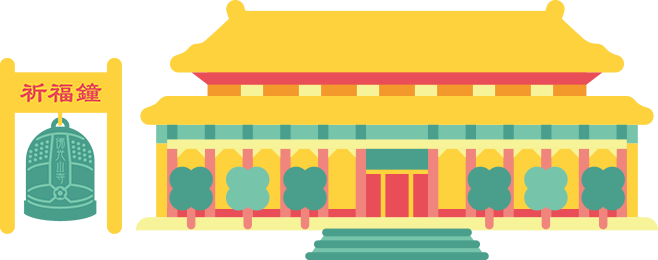2025 Hsi Lai Temple Lunar New Year Celebration Peace Lantern Festival


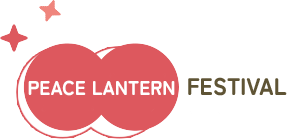
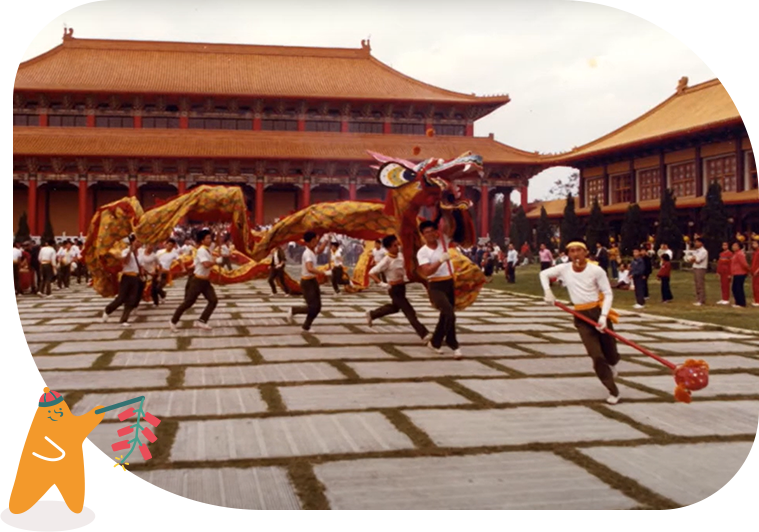
In line with the concept of purifying minds and building a Pure Land on earth, Venerable Master Hsing Yun initiated the New Year Festival of Light and Peace in 1980, an innovative way to spread the Dharma for the Buddhist community. In addition to colorful lanterns, decorations, and various exhibitions and performances which create a joyous New Year atmosphere, the community is also invited into the temple to light Peace Lanterns for the safety and auspiciousness of one's family and success in career, also igniting the wisdom, compassion, light and joy in one’s heart. Since 1980, every Lunar New Year, the New Year Festival of Light and Peace has been conducted to pray for the prosperity of the country and the people. Over the years, themes such as animatronic lanterns of Buddhist stories and international flower exhibitions have been organized, providing enjoyment of lanterns, New Year blessings, and purification of the spirit. In 2002, with the theme of "A Heavenly Steed Soaring Across the Sky,” Fo Guang Shan Monastery broke from the traditional static lantern appreciation and innovated the first dynamic lantern exhibition – a life-size horse lantern on elevated monorail.

Fo Guang Shan Monastery holds the New Year Festival of Light and Peace and the Light-Offering Inauguration Dharma Service every Lunar New Year. Combining the characteristics of a lantern festival with the tradition of religious blessings, it is hoped that everyone can ignite the light of compassion and wisdom in their hearts. These activities have been going on ever since 1980 and have never stopped. People bring their families to Fo Guang Shan Monastery with joy every year to pay homage to the Buddha, offer lights and prayers, show gratitude for wishes fulfilled, and pray for a good coming year with auspiciousness and wellness for the whole family. This has become an indispensable tradition to welcome the Lunar New Year.
The origin of the light offering is closely related to Buddhism. According to records, in the 14th year of Yongping, Emperor Ming of the Han dynasty commanded the entire country to display lanterns and decorations on the night of the Lantern Festival, the 15th day of the first lunar month, in order to celebrate the prosperity of Buddhism in China and show their high esteem of Buddhism. In the Buddhist classic, Great Tang Records on the Western Regions, it also records the historic occurrence on the 15th day of the first lunar month in the land of Magadha, ancient India, monks and laymen gathered to see the Buddha's relics emit light or rain down flowers. Therefore, the custom of displaying colored lanterns and making offerings of light has long been popular in the Buddhist world. The strength of a vow is boundless, and the light of a lamp is endless. The Sutra of King Ajatasutru’s Prophecy records that the poor girl Nanda, because of her sincerity, was blessed by the Buddha with a prophecy to attain Buddhahood in the future, all due to the merit from making a light offering. Thus, it is clear that merit does not lie in size, but only in whether our intentions are sincere or not!
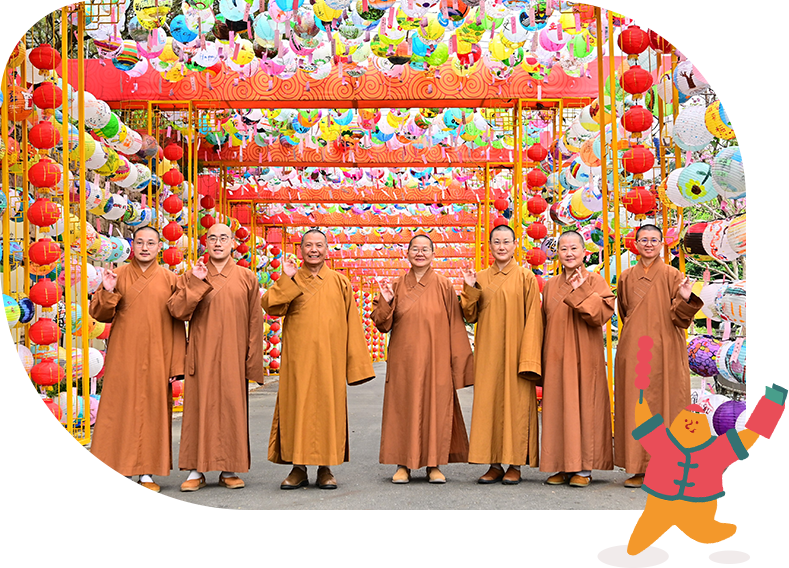
In Hsing Yun's Diaries (February 10, 1990, Saturday, at Fo Guang Shan Monastery), Venerable Master said, “ Light is one of the offerings in Buddhism. It is a symbol of brightness, wisdom, and maturity. Making light offerings have the merits of dispelling darkness, making wishes, forming affinities with sentient beings, planting virtuous roots, gaining peace, etc..” Therefore, during the Lunar New Year, Fo Guang Shan Monastery specially conducts the New Year Festival of Light and Peace so devotees can take the initiative to offer peace lanterns of various sizes totalling up to a million lanterns. In addition to exquisite lanterns made by branch temples, the hills of Fo Guang Shan are beautifully embellished. Fo Guang Shan, which means “Buddha’s Light Mountain,” truly lives up to its name.
Over the past two thousand years, governing dynasties in China have continually changed. However, the folk custom of hanging lanterns is maintained as usual with the styles of lanterns transforming drastically. Production is more exquisite, and the scale is getting bigger. Even modern sound and light technology is applied as different regions may add different festival customs in seeking a peaceful and auspicious new year.
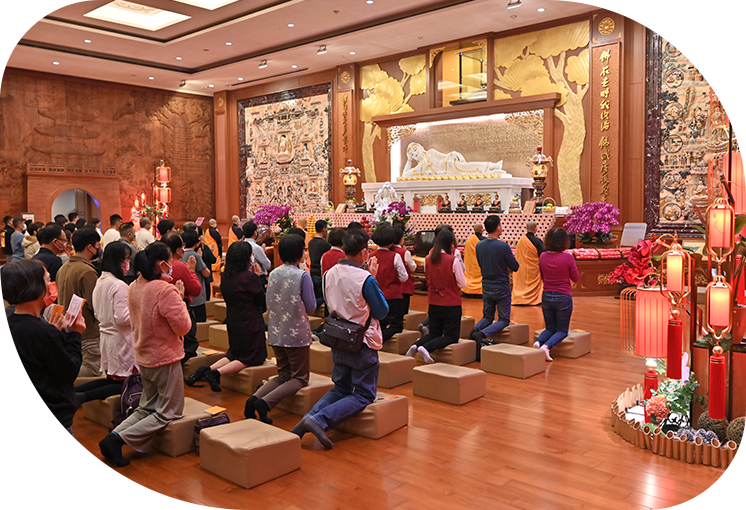
“Peace Lanterns” are also known as “Merit Lanterns.” Lighting a Peace Lantern is equivalent to planting an acre of merit. Peace Lanterns imply peace and auspiciousness, and contain the special meaning of dispelling darkness and bestowing brightness. Through the universal illumination of Buddha's light, the world will be filled with warmth, happiness, brightness and harmony. For a new year outing, you may come to Fo Guang Shan Monastery. Not only can you light a Peace Lantern but you can also enjoy the lanterns. In the warm sea of lights, besides praying with your family for family harmony, social harmony, and world peace, you can feel the happiness and Dharma joy of the endless lanterns and boundless wishes.
On the first day of every Lunar New Year, Buddhist monasteries will offer lights to the buddhas, and hold the Light-Offering Inauguration Dharma Service. The public is also accustomed to going to the temple to make light offerings on this day to pray for prosperity and peace for their families. Fo Guang Shan Monastery not only lights Peace Lanterns starting on the first day of the Lunar New Year, but also holds the Light-Offering Inauguration Dharma Service every night for a whole month, praying for the stability of the country and peace in this world.
